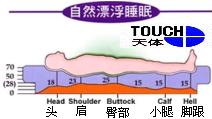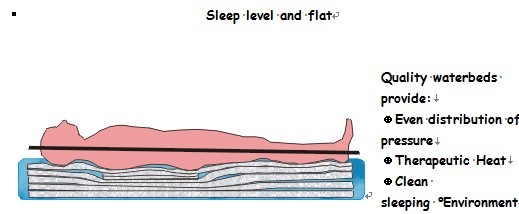Waterbeds provide a cleaner sleeping environment
Want to sleep with the critter below? Dust-mites are a microscopic relative of spiders that live in our furniture and carpets. They thrive in our bedrooms because of the heat and warmth we give off. Dust mites feed off our dead skin cells. Unfortunately their droppings have a protein that many people are allergic to.
Ten percent of Americans today have asthma which is the leading cause of children missing school. Dust mites are possibly the number one cause of asthma problems in the home.
Dust mites live about six weeks and female dust mites lay between 60 to 80 eggs during their lifetime.The mites have no natural predator so they just keep multiplying. A full size mattress has approximately two million dust mites in it. A gram of dust has 1,000 dust mites in it. Old pillows may have as much as 10% of their weight made up of dead dust mites and droppings. Makes you think, huh?
Fortunately for owners of traditional waterbeds, they are easy to take care of. Simply wash all bedlinens weekly in water that is over 140 degrees temperature and wipe the mattress down with mild soap solution, and rinse. Periodic washing of pillows is highly recommended. And special pillow covers are also available to help prevent pillow reinfestation. Vacuum your carpets and furniture weekly with a quality vacuum cleaner.


Even distribution of pressure
A waterbed shapes itself exactly to every part of your body providing even distribution of pressure and a restful nights sleep. Waterbed sleepers move only occasionally during the night, about once an hour. People suffering chronic pain appreciate the health characteristics of a waterbed.
The modern waterbed can be traced to Dr. William Hooper of Britain who recognised the benefits of a pressure-free waterbed surface in 1851. He introduced waterbeds using a rubber mattress to treat certain medical disorders. Waterbeds are widely used in the care of premature babies and are a great help for pregnant women.

On a traditional bed, sleepers move once every six minutes on average! This is caused by pressure on elbows, shoulders, and other areas in contact with the bed. Pressure points slow the blood and sleepers unconsciously move during the night to relieve these areas of discomfort. Clearly you can't sleep well if your doing the equivalent of a marathon in your sleep. Traditional beds loose 50% of their sleep quality in five years because the springs wear and the covering breaks down.
Long-term quality:
Since water does not wear out, waterbeds also sleep the same way after many years, as they do the first night. This is probably why many large stores have stopped selling or promoting waterbeds. Waterbed mattresses last too long! The typical bedding store is set up to sell a new bed set every three to five years with a much higher price tag.
Heat is therapeutic
People with waterbed heaters fall asleep faster. With traditional beds it takes anywhere from a few minutes to fifteen minutes or longer for our bodies to get the bedding to a comfortable temperature where we can fall asleep.
We have disks in our back called intervertebral disks. They are fluid filled and they loose fluid during the day and become stiffer. The harder we work our backs, the more they are affected. Favorable heat from our waterbeds combined with the even pressure of the waterbed combine to relax the back much faster and allow the spine to be quickly restored to normal.
Heat relaxes overworked muscles and can temporarily relieve the effects of arthritis, rheumatism and other joint conditions.
